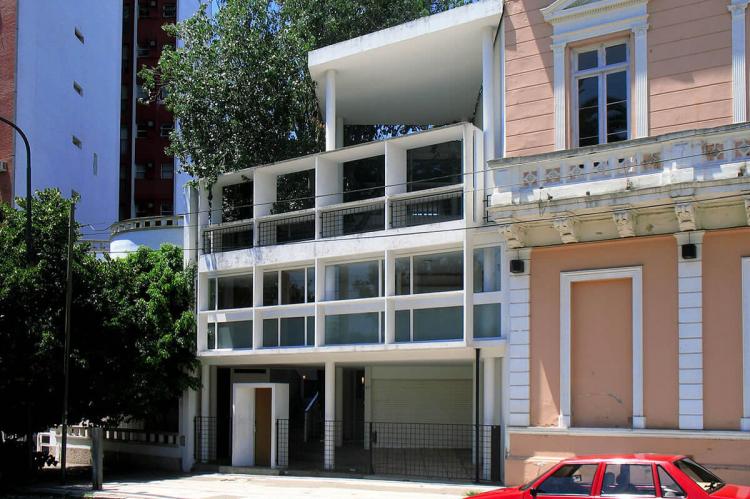Curutchet House (Argentina)
The Architectural Work of Le Corbusier, an Outstanding Contribution to the Modern Movement, comprises 17 sites across seven countries, recognized by UNESCO as World Heritage Sites. Among the distinguished sites is the Curutchet House in La Plata, Argentina, commissioned in 1948.
Curutchet House
The Architectural Work of Le Corbusier, an Outstanding Contribution to the Modern Movement, comprises 17 sites across seven countries, recognized by UNESCO as World Heritage Sites. This collection stands as a testament to the revolutionary architectural language introduced by Le Corbusier, signifying a profound departure from past conventions. Constructed over half a century, these masterpieces represent the outcome of what Le Corbusier referred to as "patient research," showcasing creative genius and contributing to the global internationalization of architectural practices.
Among the distinguished sites is the Curutchet House in La Plata, Argentina, commissioned by Dr. Pedro Domingo Curutchet, a surgeon, in 1948. The house, designed to include a small medical office on the ground floor, commenced construction in 1949 under the supervision of Amancio Williams and reached completion in 1953.
The Curutchet House serves as a manifestation of the Modern Movement's endeavors in the 20th century, addressing societal needs through innovative architectural techniques. The four main levels of the house, with a courtyard between the residence and the clinic, engage with the Paseo del Bosque park. Notable features include a brise soleil on the main facade, symbolizing the incorporation of Le Corbusier's architectural principles.
Inside the house, architectural marvels unfold, revealing thoughtful design considerations such as a tree integrated into the structure without compromising the overall aesthetic. The terrace, folding wooden curtains, inclined stair design, wardrobes, and kitchen, conceptualized during 1949-1953, remain relevant in contemporary modern designs.
A testament to Le Corbusier's five points of architecture, the Curutchet House seamlessly integrates a ramp and a spiral staircase. Furthermore, it represents a milestone in Corbusier's own trajectory, showcasing how cultural and historical architectural elements, such as those found in traditional Latin American courtyard houses, can be reinterpreted within the framework of modern architecture. Noteworthy is the house's attachment to pre-existing structures, demonstrating Corbusier's ability to harmoniously engage with historical contexts.
In essence, the Curutchet House exemplifies the dialogue between modern and traditional architecture, underscoring Le Corbusier's vision that modernity can coexist harmoniously with historical and cultural legacies. As part of the UNESCO-recognized architectural ensemble, this site remains a living testament to the enduring impact of Le Corbusier's innovative and groundbreaking contributions to the Modern Movement.
